What is In-App Guidance?

Table of contents
In-app guidance definition
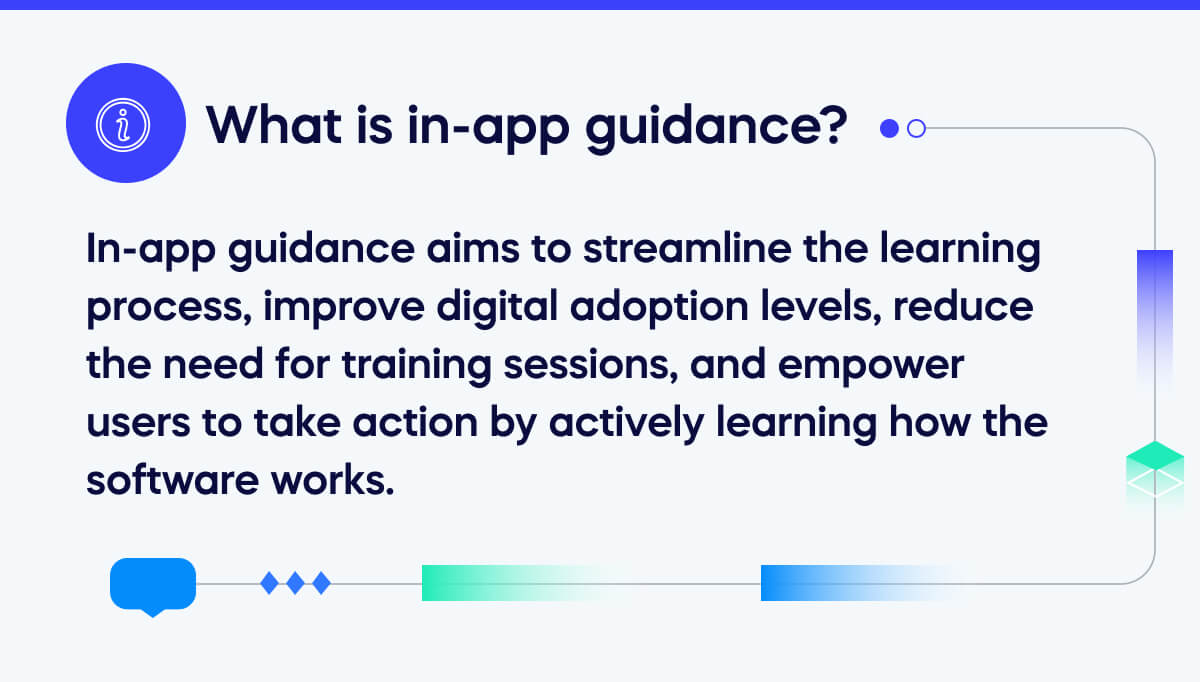
When customers or employees are getting to grips with new software, an effective way to onboard them is by using in-app guidance. A series of prompts are overlaid onto the software, providing help, tips, and support as the user explores the platform. In-app guidance aims to streamline the learning process, improve digital adoption levels, reduce the need for training sessions, and empower users to take action by actively learning how the software works.
Types of in-app guidance
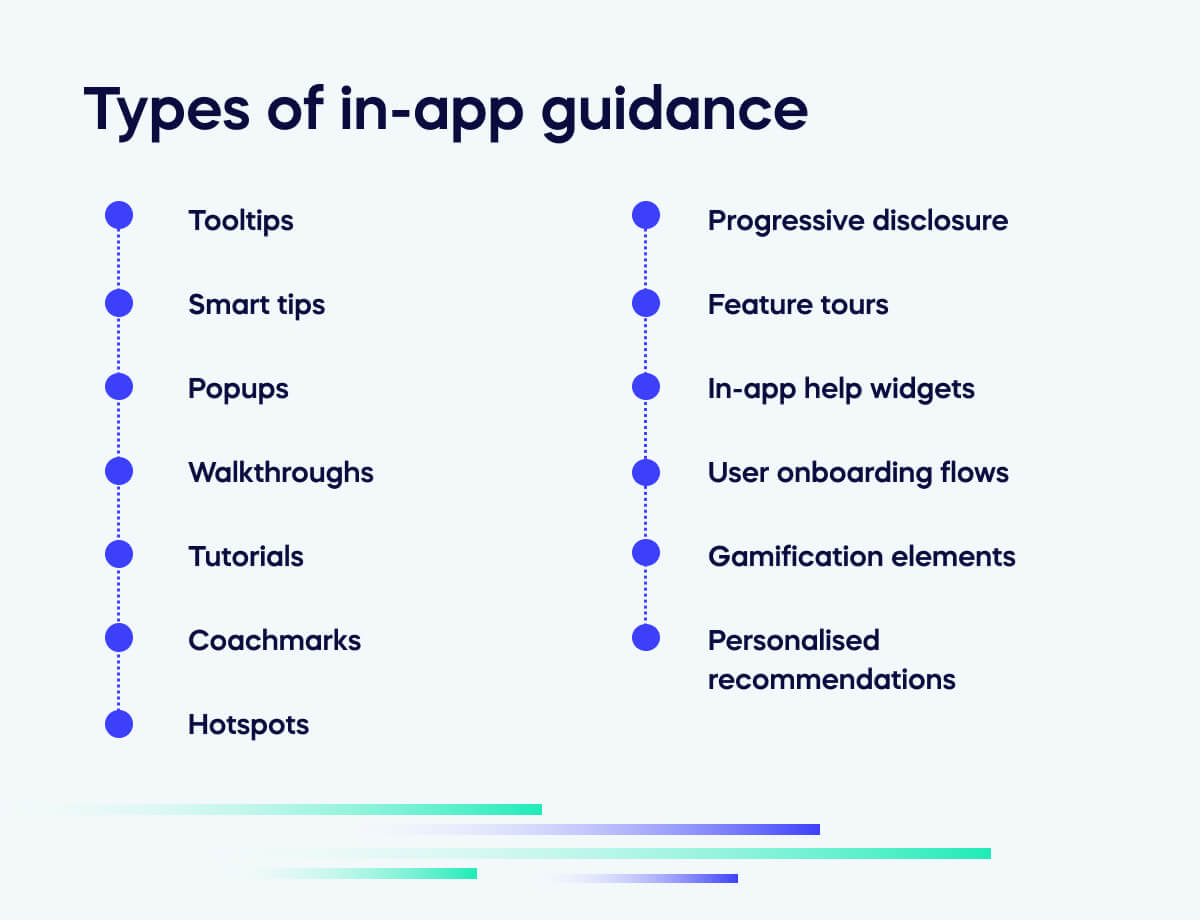
In-app guidance as a training software can come in many forms, and lots of features can be implemented. Here are some of the most popular ones.
Tooltips
When a user hovers over or clicks on an element, messages describing what it is or what it can be used for appear on the screen.
Smart tips
Many users will skip product tours, so a type of on-demand tooltip known as a smart tip can be brought up by hovering over an on-page element. They provide contextual information about a task the user is performing.
Popups
Like tooltips, these provide further information about elements – but they are displayed as larger windows with more detail.
Walkthroughs
Step-by-step guides lead users through an application, often highlighting features on-screen and describing their use.
Tutorials
A more interactive version of walkthroughs, where users are encouraged to perform actions as they learn to use the platform.
Coachmarks
Semi-transparent overlays appear to highlight specific elements on the screen and offer brief instructions or explanations.
Hotspots
Similar to coachmarks, these are typically used to draw attention to new features or changes to the platform.
Progressive disclosure
This technique reveals features or options over time as a user becomes more familiar with the application. Often used within a walkthrough or tutorial, they prevent users from being overwhelmed with too much upfront information.
Feature tours
A brisker, more concise version of a walkthrough that aims to highlight important features or functions within the app before leaving the user to explore the platform for themselves.
In-app help widgets
Elements that can be clicked on and expanded to access features such as a knowledge base, FAQ section, or live chat support.
User onboarding flows
A series of steps or screens specifically focuses on setting up new users with the platform. Checklists or task lists may form part of the online training process.
Gamification elements
Elements such as progress bars, badges, or rewards guide users through completing tasks or achieving goals within the platform.
Personalised recommendations
Personalized recommendations or suggestions can be made on-screen based on a user’s existing behavior or preferences on the platform.
When is in-app guidance used?
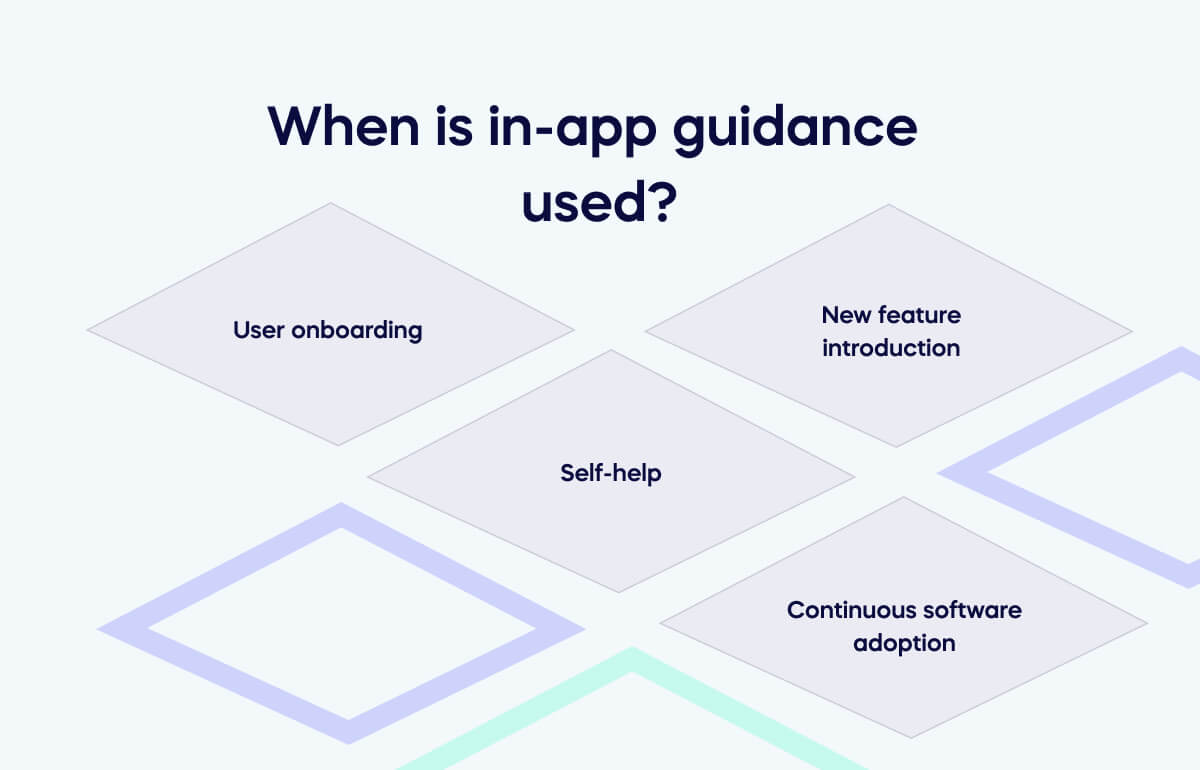
User onboarding
Customers and employees will benefit from in-app guidance when they need to get to grips with a new software application or user interface. They can easily navigate the initial setup and learn key features and the basics of using the application.
New feature introduction
Occasionally, software undergoes updates or introduces new features that users should be made aware of. In-app guidance can be utilized to effectively communicate these updates and provide instructions on their usage.
Self-help
Both customers and employers will need to look up issues they are having with a platform, whether an error has come up, the issue wasn’t covered in the walkthrough, or they skipped the tutorial. Having step-by-step or intuitive troubleshooting or self-help resources will reduce support tickets and decrease user frustration.
Continuous software adoption
The learning journey doesn’t end once the onboarding tutorial has been completed. Users should be prompted from time to time about useful features they haven’t opened in a while, given contextual information when they open a new tool, or reminded of troubleshooting guides.
Who benefits from in-app guidance?
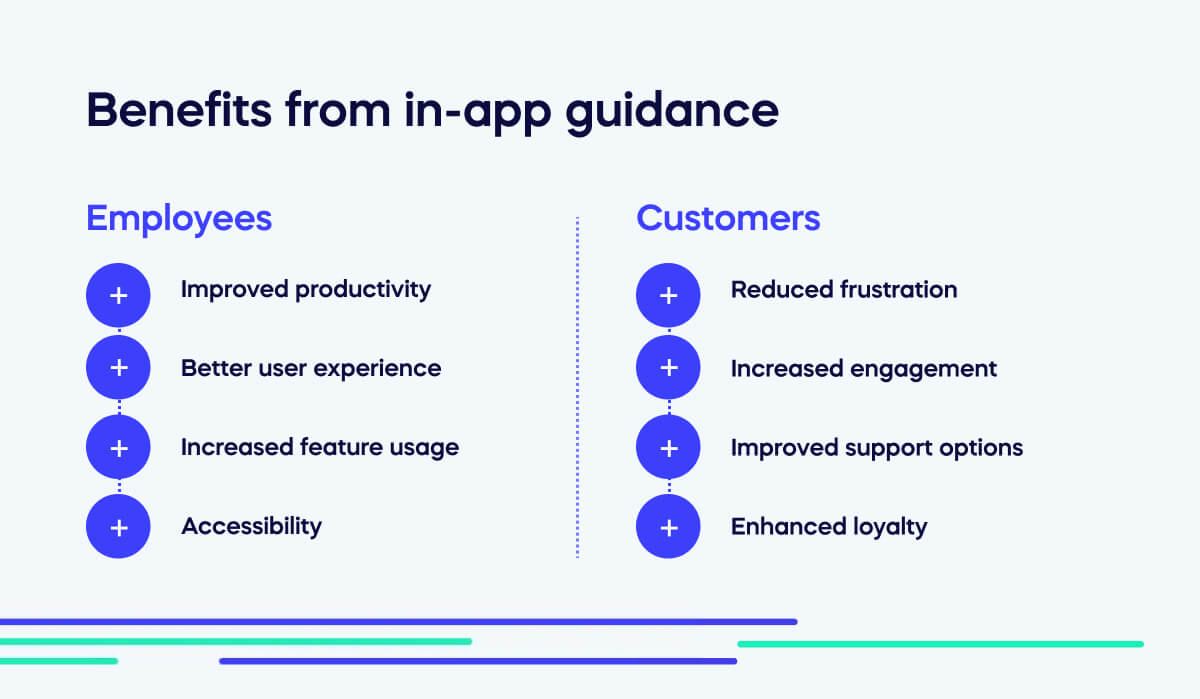
Employees
Improved productivity
By using in-app guidance, employees can learn new software at an accelerated rate. This is because they can follow the advice at their own pace and access help topics if they encounter issues.
Better user experience
When employees use in-app guidance and grasp software more quickly, they will feel satisfied and be more likely to enjoy their work. Frustrations such as not understanding a feature or waiting a long time for support will be eliminated as they can work to overcome these hurdles themselves, improving the employee experience.
Increased feature usage
In-app guidance allows employees to learn about features they may not have known. Updates to the technology or features they haven’t interacted with yet will be highlighted – giving them a chance to explore them where they may not have done otherwise.
Accessibility
There is no need to hold in-person training sessions or wait for all employees to be available at one given time to conduct a virtual session. Instead, employees working from home or in a hybrid setup can choose when they learn how to use the new software.
Customers
Reduced frustration
In-app guidance creates an improved user interface for customers, as they will be guided through key features without figuring out the platform themselves. This results in reduced frustration as they are less likely to encounter obstacles.
Increased engagement
Customers will be signposted towards key features, encouraging them to explore the full range of tools at their disposal. This should lead to improved user engagement metrics.
Improved support options
There will no longer be a need to flag a support ticket or contact customer support for every issue. Instead, in-app guidance software will tell customers where they can find self-help tools that will answer many of their queries.
Enhanced loyalty
As in-app guidance can provide customers with benefits such as personalization, improved support, a better user interface, and a quicker understanding of the available features, customers will associate with a company more positively and are more likely to be loyal.
Challenges of in-app guidance
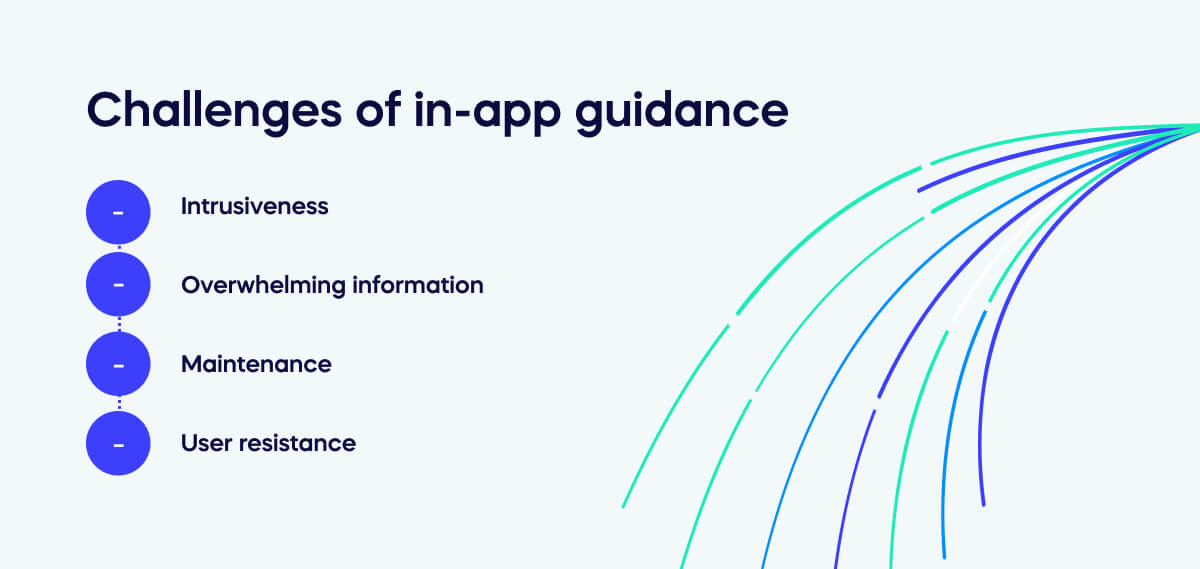
Intrusiveness
Some users may not like having an overlay giving them information about the tools they’re using. It could interrupt their workflow and annoy them, especially if tooltips and pop-ups repeatedly appear on the screen despite being clicked away from it.
Overwhelming information
In-app guidance should provide information in a metered way to avoid overload on the screen. It can be easy to put users off a platform if they are presented with lots to look at, read, and click through just to get started.
Maintenance
In-app guidance needs to be updated regularly to ensure it is accurate and gives the best experience to users. It will be particularly important to update the system when the software is upgraded, or new features are rolled out.
User resistance
Some people may feel confident enough in their ability to work out a new platform or application without the need for in-app guidance. They could find the overlay patronizing, especially if they have to click through an entire tutorial before it will disappear from their screen.